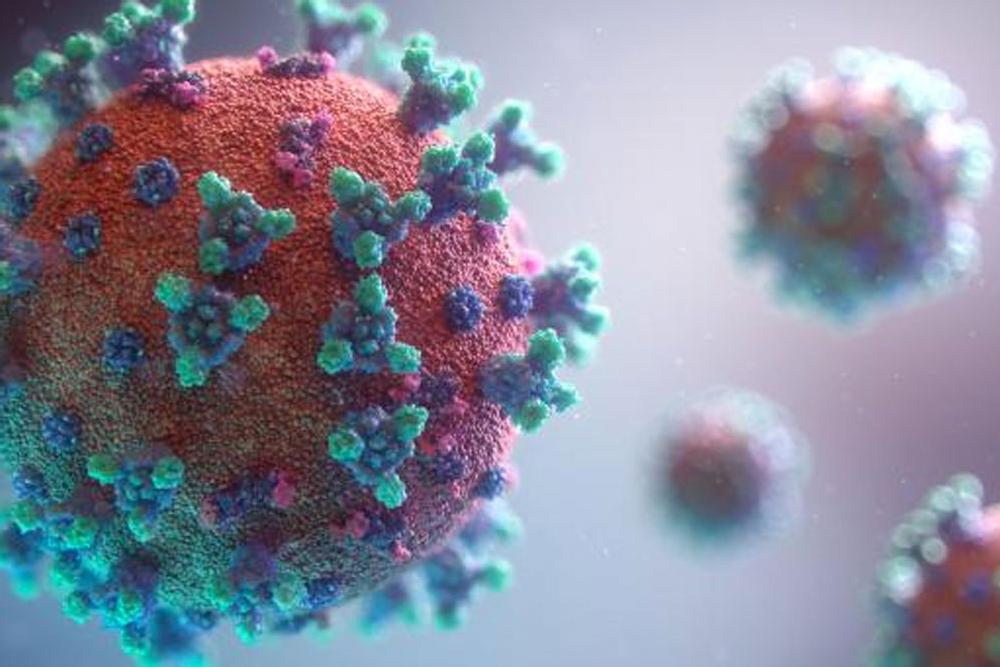
COVID-19 vs Flu and Other Respiratory Illnesses
SARS-CoV-2 is the virus that causes the COVID-19 infection. You can be ill with more than one virus at the same time. As the SARS-CoV-2 virus pandemic continues, influenza and other respiratory infections will also emerge in the community. Respiratory infections may present with similar symptoms and all can spread from person to person. It is hard to tell which virus or bacteria is causing a person's illness based on symptoms alone. At times testing is needed to see which virus(es) or bacteria are present. These tests usually involve getting a nose and/or throat swab sample, as most of these viruses are present in large amounts in the back of the nose and throat. There is still a lot to learn about the COVID-19 infection and research is ongoing.
You can be ill with more than one virus at the same time. When multiple viruses are present the risk of developing severe disease increases. The severe disease usually involves difficulty breathing and getting oxygen into your body. Risk factors for severe illness are shown here.
How are COVID-19 and other respiratory viruses spread?
These viruses spread from person to person, mainly by people who are in close contact with one another (within about 6 feet). They are spread mainly by droplets made when people with the illness (COVID-19 or flu) cough, sneeze, talk, or sing. These droplets can land in the mouths or noses of people who are nearby or possibly be inhaled into the lungs. You can be infected by physical human contact (such as shaking hands) or by touching a surface or object that has the virus on it and then touching your mouth, nose, or possibly eyes. Illnesses caused by COVID-19 or other respiratory viruses such as influenza can range in severity from no symptoms (asymptomatic) to severe. Some people may be able to spread the viruses before they develop symptoms. COVID-19 can spread for 5-7 days, and sometimes longer, before the onset of symptoms.
What can I do to avoid COVID-19 and other viral respiratory infections?
There is not an approved vaccine for SARS-CoV-2 (the virus that causes COVID-19) yet. You can take the influenza vaccine that covers the Flu A and B strains expected this season. Getting a flu vaccine each year can help protect you and reduce your risk of severe illness. Basic measures to avoid exposure, including physical distancing, masks, and good hand washing, can help not only prevent COVID-19 but also most respiratory infections. Follow the 6-foot (bicycle) rule for physical distancing. Wash your hands with soap and water for 20 seconds (or use a hand sanitizer with at least 60% alcohol). Wear an appropriate mask (covering both nose and mouth) whenever you are around other people. Avoid contact with ill people. Keep surfaces you touch clean and disinfected. Avoid smoking and vaping exposure. For more information about face coverings/masks see www.thoracic.org/patients.
How can I tell the difference between COVID-19 and other infections if I get sick?
It can be very hard to tell them apart by symptoms. Here are some comparisons between the SARS-CoV-2 virus causing COVID-19 and the influenza viruses that cause the 'flu' based on the best information currently available. You can see that there are many similarities. Some differences are marked in bold type.
View a table comparing signs and symptoms of COVID-19 versus Flu.

Related Articles

Family Medicine
7 Myths About the COVID Vaccine
Myth: I had COVID-19, so I don't need the vaccine. Fact: With natural infection, there is a level...

Family Medicine
Acne: More Common Than You Think
Acne is the most common skin disorder in the United States, affecting 40 to 50 million people of all...

Internal Medicine
Ulcers - Can’t Handle the Pressure
Skin is our body's largest organ. Unfortunately, like other organ systems, it sometimes fails. All...

Internal Medicine
Dementia and the Caregiver Burden
In the United States, an estimated 5.3 million people are diagnosed with Alzheimer's dementia (AD)....
